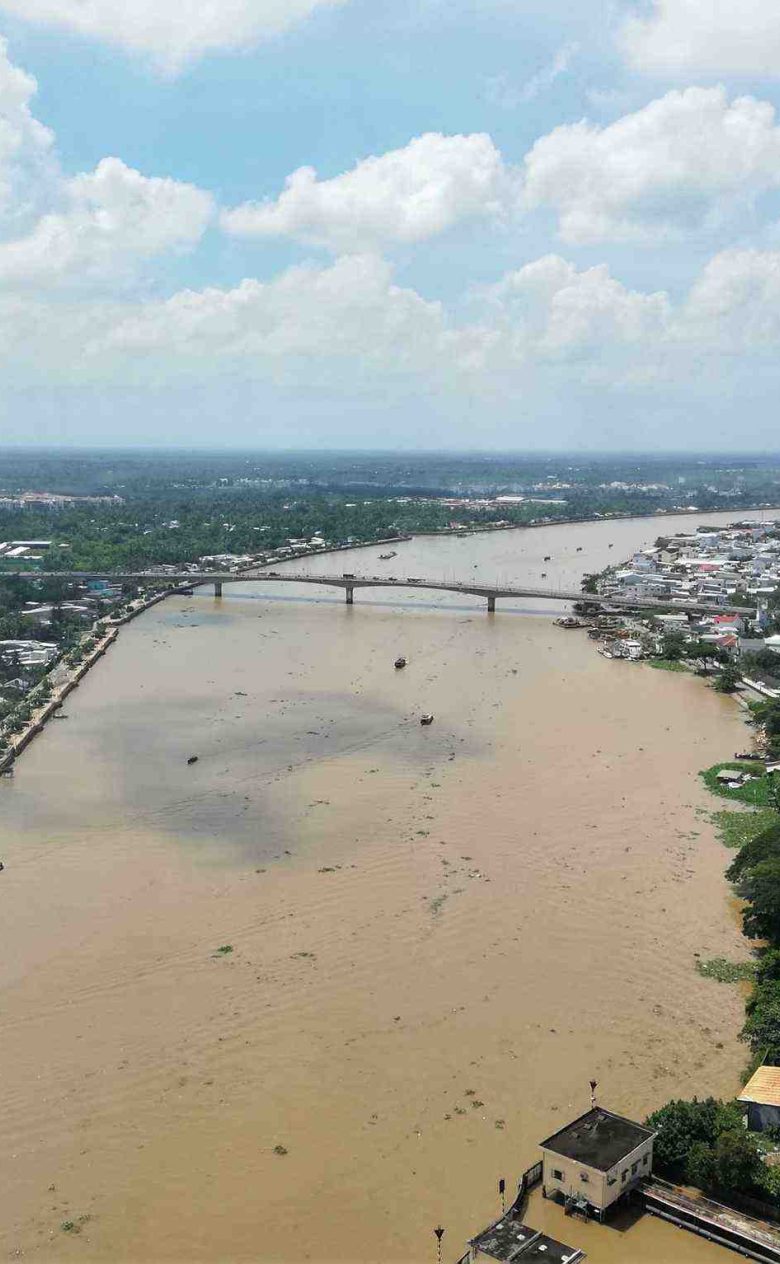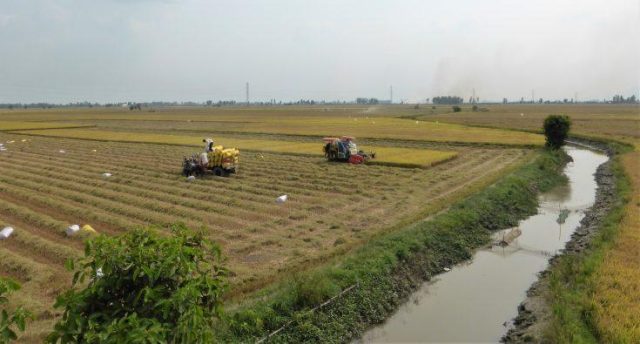Can the Mekong Delta be saved from drowning?
The Mekong Delta in Vietnam could be nearly fully submerged by the end of the century if urgent actions are not taken across the river basin. Continuing with business as usual could drown 90% of this agro-economic powerhouse that’s home to nearly 20 million people – with immense local and global impacts.

Only concerted action by the six countries in the Mekong basin and better management of water and sediments within the delta could avoid such a devastating outcome, argues an interdisciplinary research team in a commentary published today in the journal Science.
Land subsidence and rapid hydropower development threaten the future
Most of 40,000 km2 delta is less than 2m above sea level and is thus prone to climate change induced sea level rise. On top of that, actions in the delta such as over pumping of groundwater and unsustainable sand mining to construct expanding cities across Asia leads to land subsidence. This and the rapid hydropower development upstream threaten the future of the most productive rice basket in Southeast Asia. There are large parts of the delta that are sudsiding at rates of up to 5-6 cm a year, and the people are increasingly feeling the impact: more flooding and the increasing salinisation of groundwater and surface water. “Land subsidence in a delta is a natural process, but in recent decades the delta has been sinking faster and faster due to increasing human activities, such as excessive groundwater extraction. Large parts are subsiding 10-20 times faster than sea level is rising,” according Philip Minderhoud of Deltares, assistant professor Wageningen University and Padova University. “In addition, we have recently discovered that the delta is a lot lower elevated above sea level than previously thought, less than a meter on average.” This combination means that the area is extremely vulnerable and if the current development continues, large parts could sink below sea level as early as in the next ten to twenty years.
Lack of sediment
“It's hard to fathom that a landform the size of the Netherlands and with a comparable population might disappear by the end of the century,” said lead author Professor Matt Kondolf from University of California, Berkeley. “Yet, like any river delta, the Mekong Delta can only exist if it receives a sufficient sediment supply from its upstream basin and water flows to spread that sediment across the delta surface, so that land is built at a rate that is equal or greater than global sea level rise.” In the Mekong, water and sediment flows are increasingly endangered.
“Hungry for renewable energy, countries in the basin develop hydropower dams, which trap sediment, with little regard for system scale impacts. What little sediment reaches the lower Mekong could be mined to meet the demands of the burgeoning real estate sector in the region, which requires great amounts of sand for construction and land reclamation,” summarised co-lead author Dr Rafael Schmitt from University of Stanford.
But not all the blame can be put to upstream actions and global climate change induced sea level rise. In the delta itself, high dikes have been built to control floods and thus enable high intensity agriculture. This also prevents the fertile sediment from being deposited on the rice fields.

Allow dynamic, natural processes to help prevent the delta from further sinking
However, the drowning of the delta is not a fait accompli. There are steps that can be taken to allow dynamic, natural processes to help prevent the delta from further sinking and shrinking. The team identify six measures that are feasible and have global precedents and would significantly increase the lifetime of the delta:
- Avoid high impact hydropower dams by replacing planned projects with wind and solar farms when possible and if not, building new dams in a strategic way that reduces their downstream impacts;
- Design and/or retrofit hydropower dams to enable better sediment passage;
- Phase out riverbed sand mining and strictly regulate all sediment mining, while reducing the need for Mekong sand through sustainable building materials and recycling;
- Re-evaluate intensive agriculture in the Mekong Delta for its sustainability and reduce depletion of groundwater reserves by overexploitation;
- Maintain connectivity of delta floodplain by adapting water infrastructure; and
- Investing in natural solutions for coastal protections on a large scale along the delta’s coasts.
“Countries must choose a better development path for the Mekong river and region – one that is based on ambitious but feasible policies, which support a system-wide approach to energy, construction and agriculture that will build the resilience of the delta and benefit all the people and nature that depend on it. Business as usual would spell disaster for the delta,” says Goichot WWF Asia/Pacific Freshwater Lead. Countries would also need to agree that the sustenance of the Mekong delta is an important regional policy objective.
Holistic approach is needed
Minderhoud recently published another paper evaluating the effectiveness of the proposed sedimentation strategies in Communications Earth and Environment . “In other recent work we concluded that even in a situation where sediment is managed properly across the basin, there is not enough sediment available to compensate for the accelerated subsidence rates we see currently. This strengthens the message that there is not one silver bullet to solve the issue. It is crucial to combine all efforts, large scale in the upstream river basin together with local actions within the delta focused on reducing human activities that speed up subsidence." A holistic approach is needed. Only then the delta has a chance to sustain into the 21th century.
Implementing the measures will require participation from national governments and international actors as well as new actors, including from the private sector and civil society. But together it is possible to save the delta from drowning.


